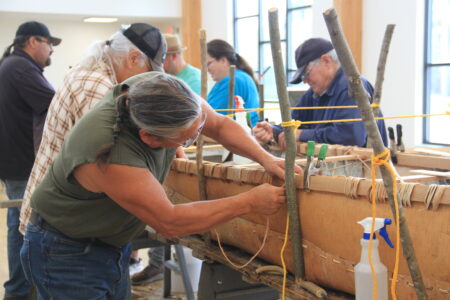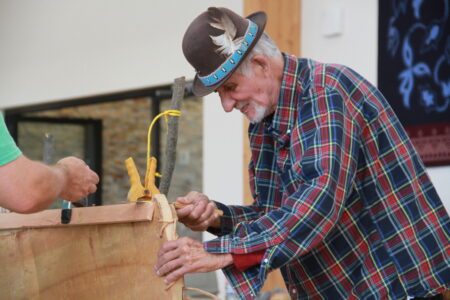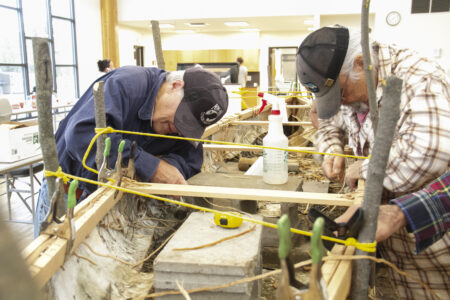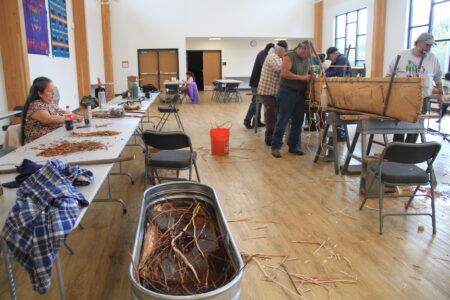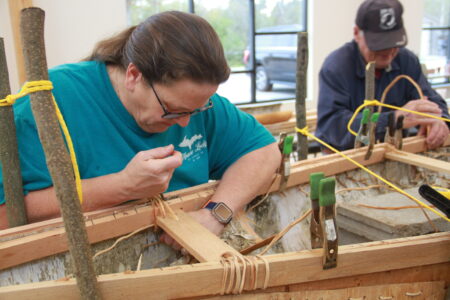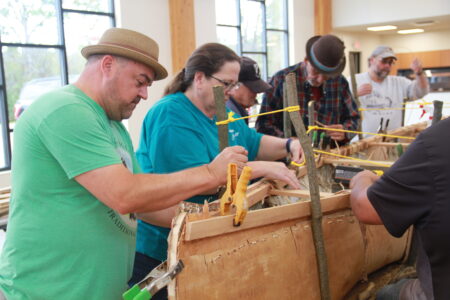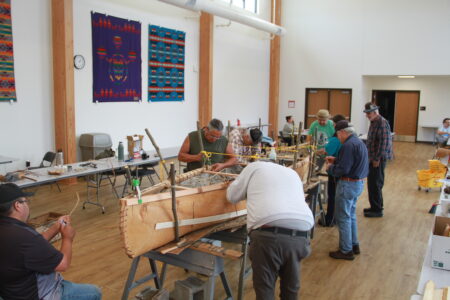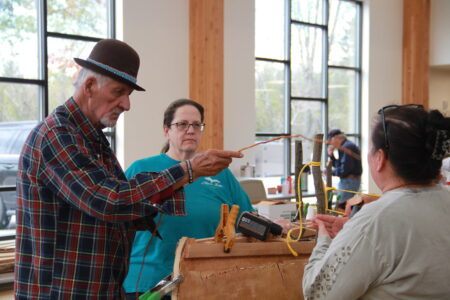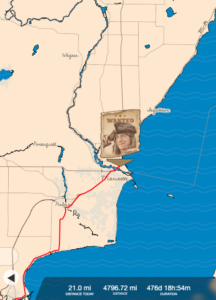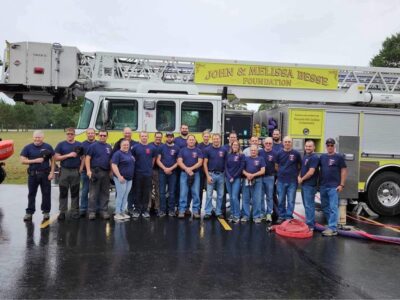Center hosts demonstration on building a birch bark canoe
- A class on the assembly of a wooden canoe at the Sault Ste. Marie Tribe of Chippewa Indians’ community center in Escanaba brought together many hands. (R. R. Branstrom | Daily Press)
- Ron Paquin carves a piece of wood with a knife at the bow of the partially built canoe in the Sault Tribe Escanaba Community Center. (R. R. Branstrom | Daily Press)
- Ernie Demmon and Larry Godfrey of Gladstone lean over the gunnels of an in-process birch bark canoe as they work to pull through strips of spruce root that hold pieces together, like heavy-duty stitching. (R. R. Branstrom | Daily Press)
- Spruce roots soak in a basin of water. At left, a woman peels the fine bark off one root at a time. (R. R. Branstrom | Daily Press)
- Sue Caldwell, Ron Paquin’s cousin, pushes a spruce root through a hole in the side of the birch bark canoe. To her left, Ernie Demmon pulls one tight. (R. R. Branstrom | Daily Press)
- From left, Adam Avery, Sue Caldwell, Ernie Demmon, Ron Paquin and others work together to build a traditional birch bark canoe at the Sault Ste. Marie Tribe of Chippewa Indians’ community center in Escanaba. (R. R. Branstrom | Daily Press)
- A class/demonstration on building a birch bark canoe occupies The Sault Ste. Marie Tribe of Chippewa Indians Escanaba Community Center. (R. R. Branstrom | Daily Press)
- Ron Paquin examines a root to be used in building a traditional birch bark canoe. (R. R. Branstrom | Daily Press)
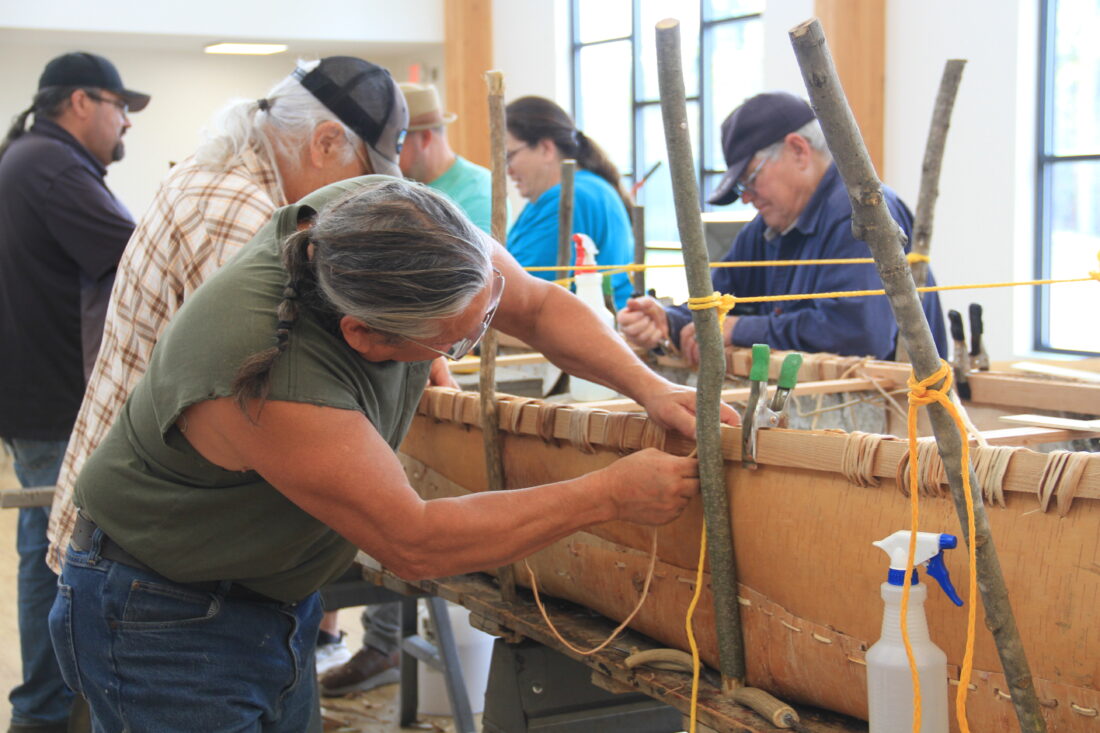
A class on the assembly of a wooden canoe at the Sault Ste. Marie Tribe of Chippewa Indians' community center in Escanaba brought together many hands. (R. R. Branstrom | Daily Press)
ESCANABA — A birch bark canoe was assembled last week at the Sault Ste. Marie Tribe of Chippewa Indians’ Escanaba Community Center, the activity serving as a lesson and demonstration of the Native American art for those who had never seen a traditional canoe built before.
The project was led by Ron Paquin of St. Ignace, a member of the Sault Tribe. The wooden boat put together in the Escanaba Community Center was about Paquin’s 84th — he’s been building them for the past 60 years.
Paquin, age 83, works for the Museum of Ojibwa Culture in St. Ignace. When he was first asked to build a canoe for the museum, Paquin was in his 20s and had no idea how to build one — “but it’s mostly common sense,” as he put it.
“When I started out, I had to teach myself. There wasn’t nobody around that knew how to do it,” Paquin said. “But common sense: you need the bark. You know, common sense: you need ribs and planking and roots. So I figured it out.”
The first one he made utilized a lot of guesswork. For the second, his carpenter brother-in-law helped. Now, the process is a breeze, and Paquin teaches classes — both at home and at various destinations. He’s aided by right-hand man Adam Avery, who’s been involved for the past 12 or 13 years, and several other workers and miscellaneous volunteers.
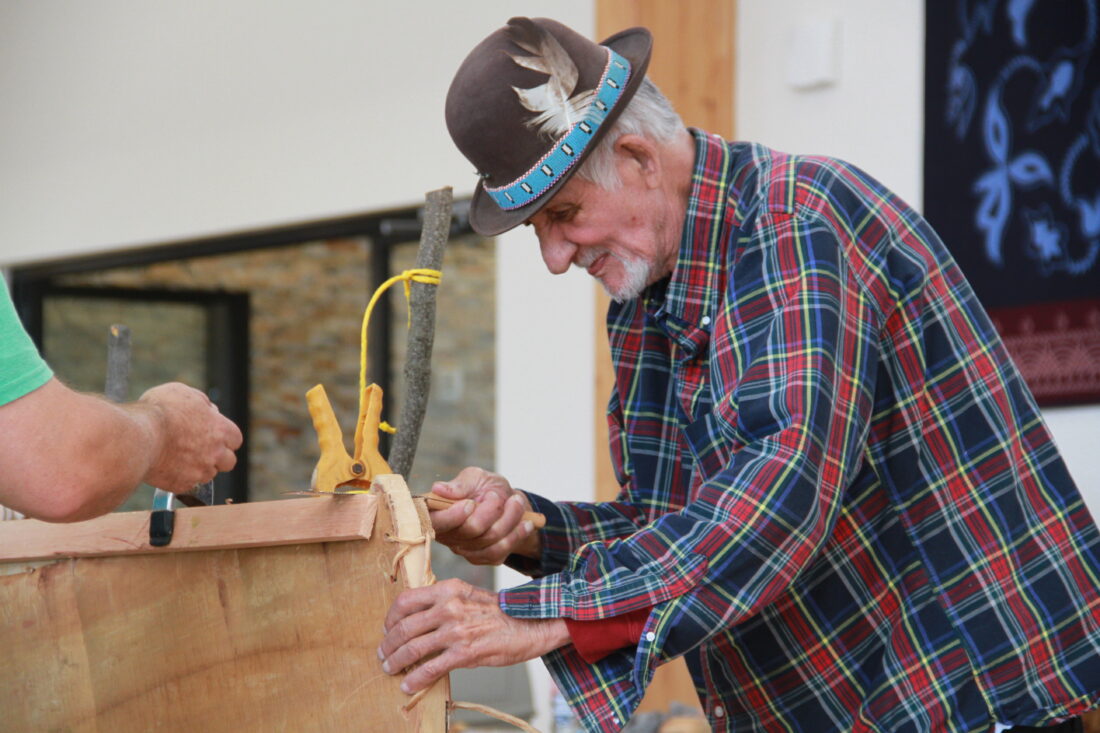
Ron Paquin carves a piece of wood with a knife at the bow of the partially built canoe in the Sault Tribe Escanaba Community Center. (R. R. Branstrom | Daily Press)
Roughly 20 people came in and out during the first day at the Escanaba Community Center. Some stayed to help, but many simply spectated.
“It was a great experience for people who’ve never seen one made before,” said Gladstone resident Larry Godfrey, who assisted with the build. Godfrey has built his own birch bark canoe in the past — and he learned from Paquin.
While actual construction in the community center only took a few days, the process of gathering all the materials is the longer part. Spruce tree roots are used to stitch the pieces together. Hardwood — oak — becomes the thwart, the crosspiece that braces the sides of the canoe. Cedar planks form the gunnels. Some pieces, like the spruce roots used to tie and cedar strips that bend around the top rim of the hull, need to be soaked in water to remain pliable. Similarly, the birch cannot be too dry or it becomes brittle. Not all birch bark is suitable; pieces must be thick.
The only artificial product that was used in the new canoe was a caulk that replaces what was traditionally achieved with a blend of pitch, char and bear fat. Paquin says he does use the traditional concoction sometimes and has jars of bear fat at home.
Godfrey said various tribes have their own style to crafting canoes, but pointed out that the shape of the canoe has been unchanged for centuries; even store-bought ones of metal or plastic or composite follow the form of the ancient Native American vessels.
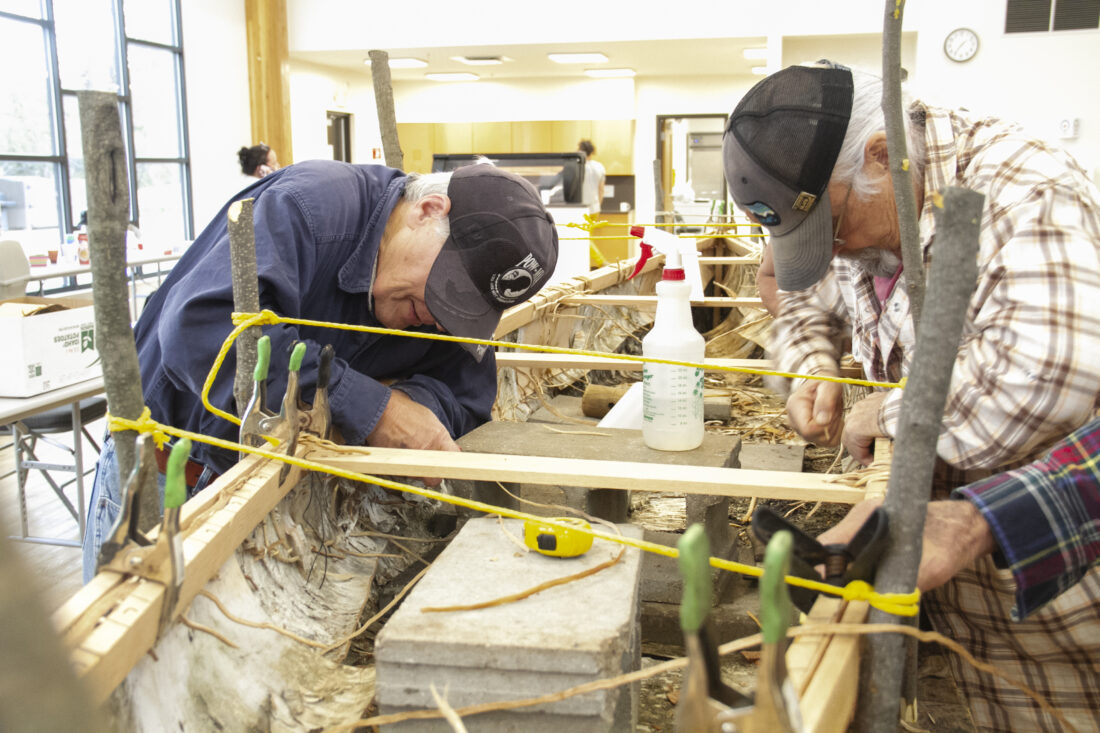
Ernie Demmon and Larry Godfrey of Gladstone lean over the gunnels of an in-process birch bark canoe as they work to pull through strips of spruce root that hold pieces together, like heavy-duty stitching. (R. R. Branstrom | Daily Press)
Avery, from the Saginaw Chippewa Indian Tribe, lives in Mount Pleasant. A successful artist in his own right, Avery comes from a family of black ash basket weavers. He works with multiple mediums but is perhaps best known for his beading.
Avery met Paquin when the elder man was holding a quillwork class in Mount Pleasant. When Avery learned that Paquin made canoes, he was eager to learn, but Paquin informed him that he was retiring because his wife, Molly, didn’t want him going into the woods alone anymore. Avery volunteered to go with him, and the two have been a team ever since.
“I spend roughly, usually, at least two weeks a year with him just harvesting,” Avery said. “In his shop, we load up birch bark and spruce roots and all those different things … We get him stocked up on something, then he just sits and works on things all winter long, cranks stuff out.”
Their next project will be to build a canoe in St. Ignace.
The Escanaba Community Center on Jingob Street is on tribal land in Escanaba, part of the local unit or branch of the Sault St. Marie Tribe of Chippewa Indians, which is scattered through the area but also has buildings in Hessel, Kincheloe, Manistique, Marquette, Munising, the Sault and St. Ignace.
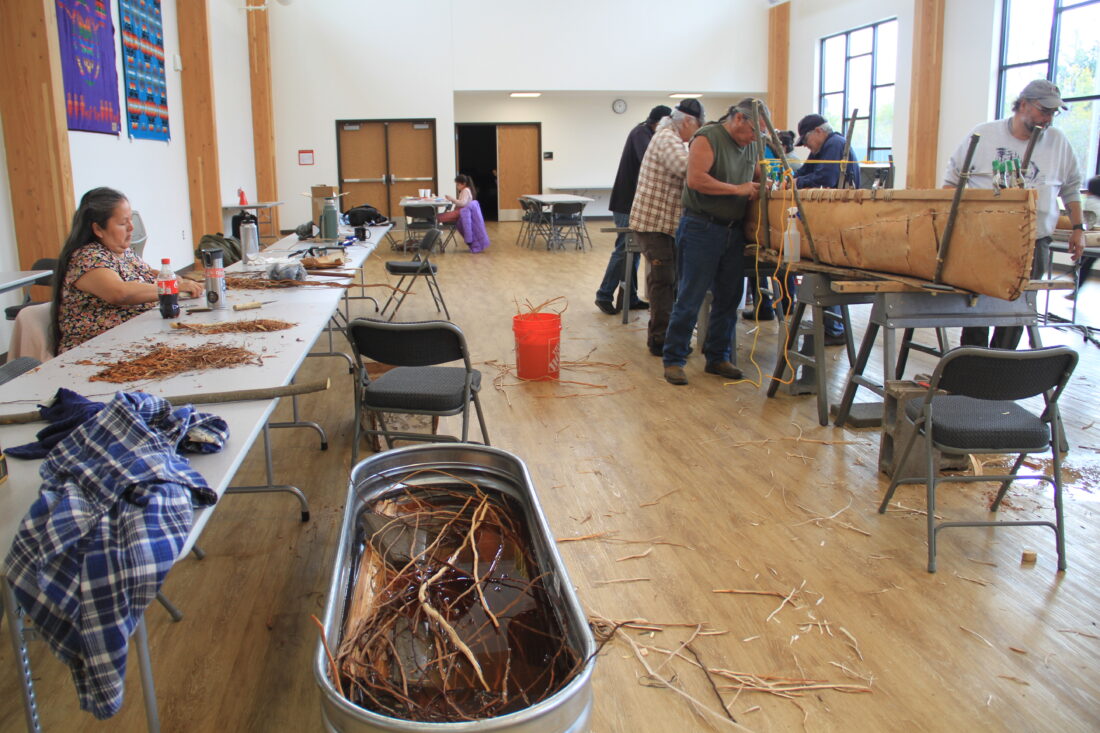
Spruce roots soak in a basin of water. At left, a woman peels the fine bark off one root at a time. (R. R. Branstrom | Daily Press)
While the new canoe will be primarily decorative, it’ll go in the water at least once, Godfrey said.
———
R. R. Branstrom can be reached at 906-786-2021, ext. 140, or rbranstrom@dailypress.net.
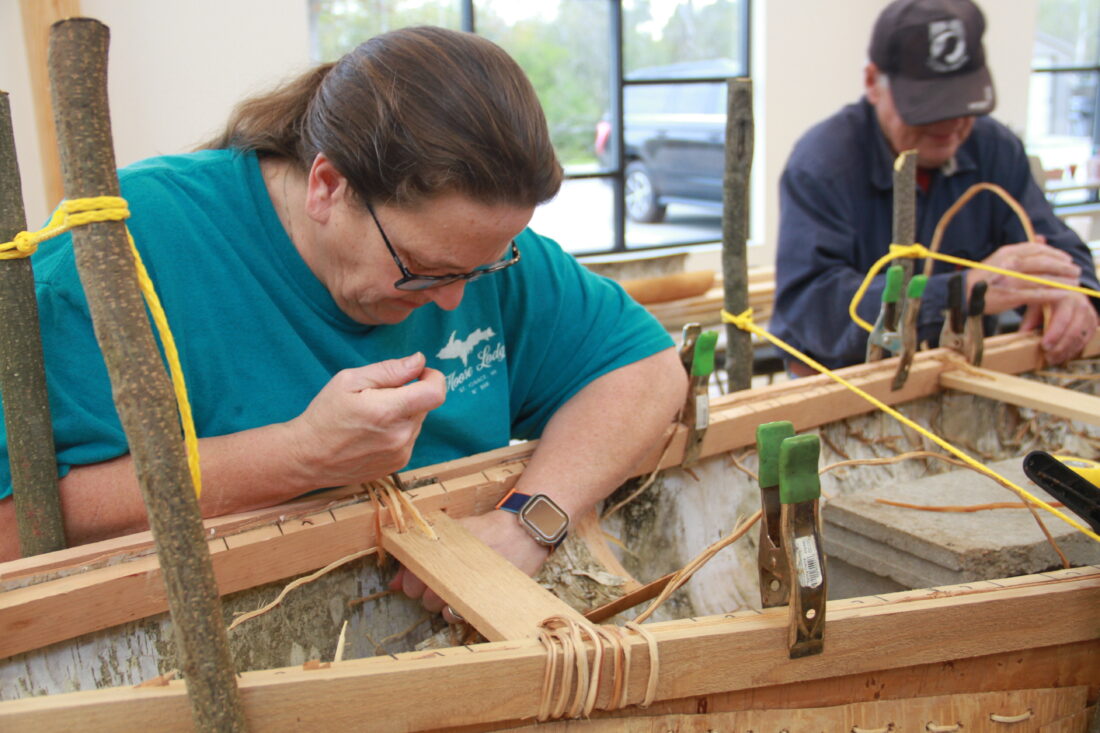
Sue Caldwell, Ron Paquin's cousin, pushes a spruce root through a hole in the side of the birch bark canoe. To her left, Ernie Demmon pulls one tight. (R. R. Branstrom | Daily Press)
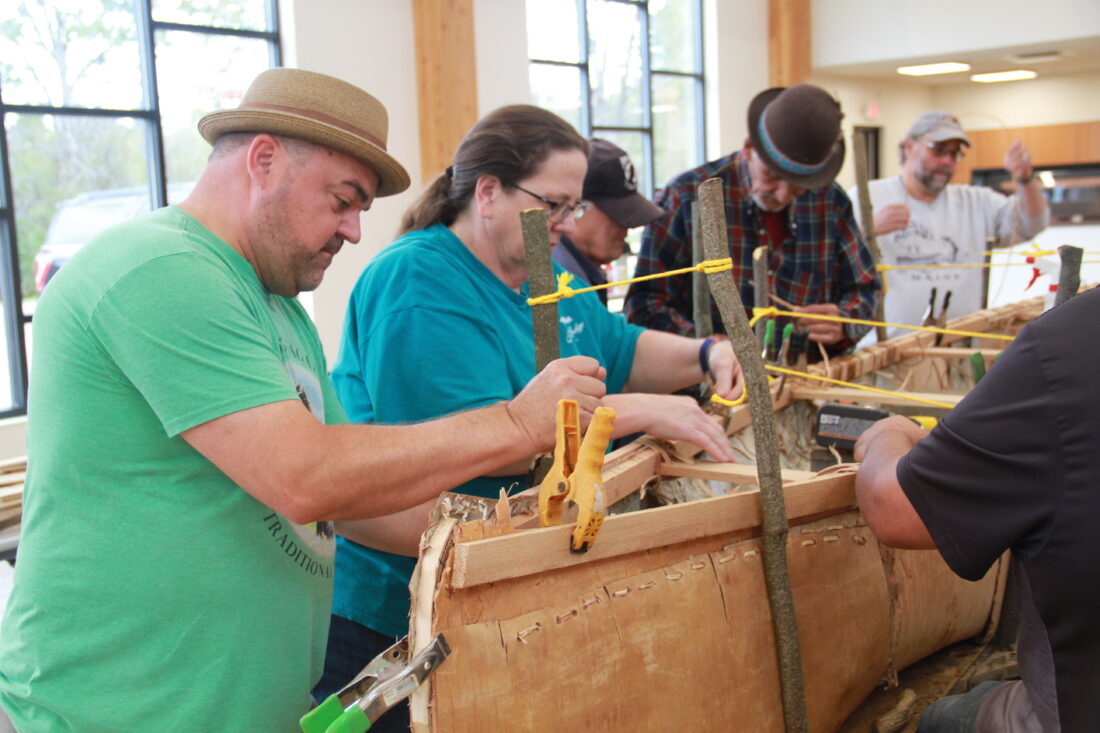
From left, Adam Avery, Sue Caldwell, Ernie Demmon, Ron Paquin and others work together to build a traditional birch bark canoe at the Sault Ste. Marie Tribe of Chippewa Indians' community center in Escanaba. (R. R. Branstrom | Daily Press)
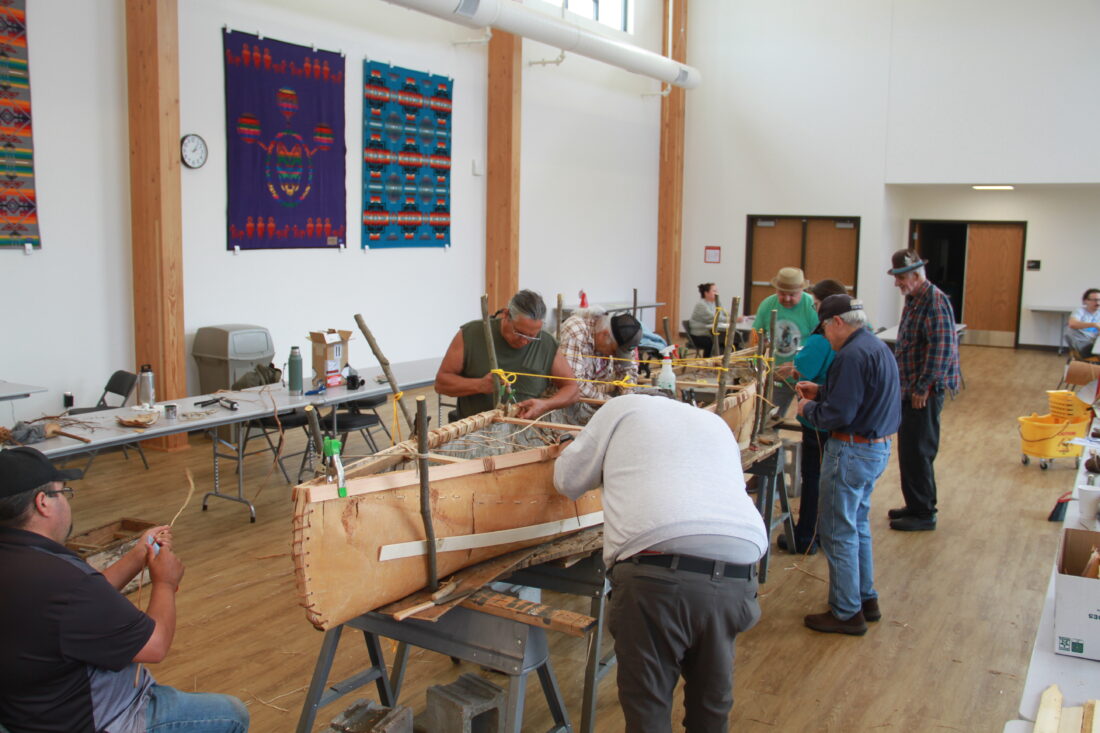
A class/demonstration on building a birch bark canoe occupies The Sault Ste. Marie Tribe of Chippewa Indians Escanaba Community Center. (R. R. Branstrom | Daily Press)
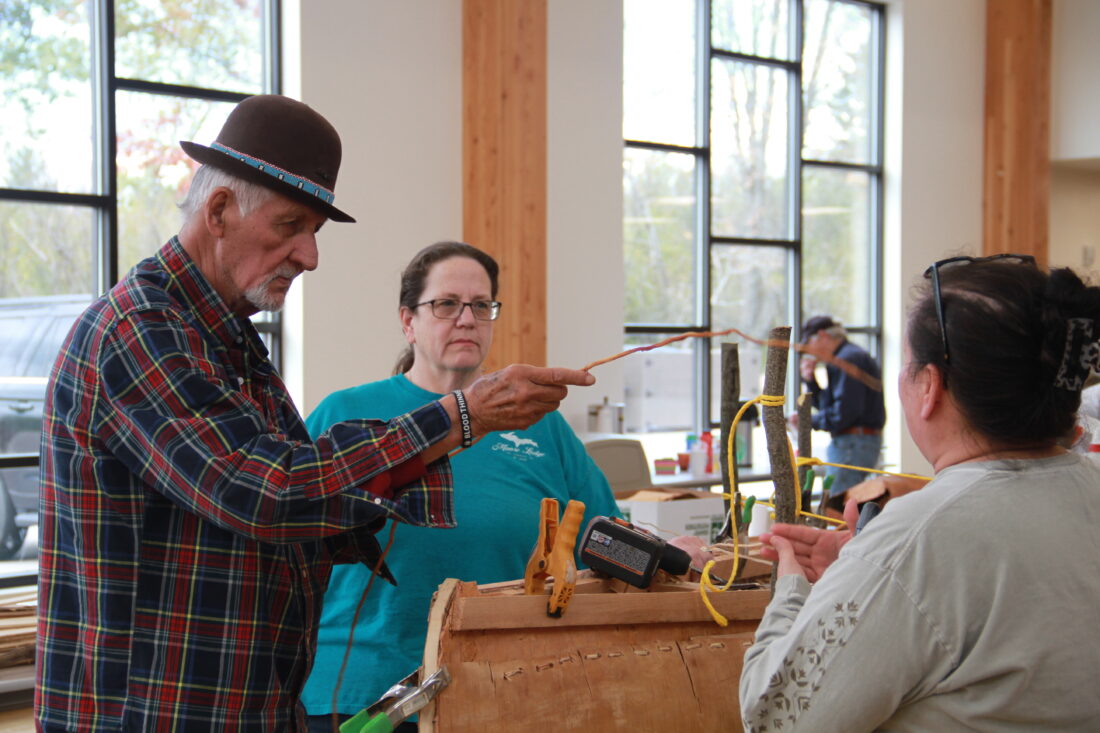
Ron Paquin examines a root to be used in building a traditional birch bark canoe. (R. R. Branstrom | Daily Press)

